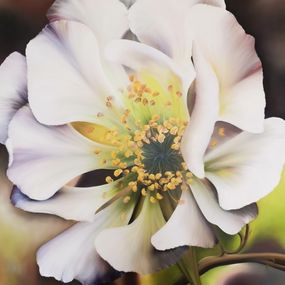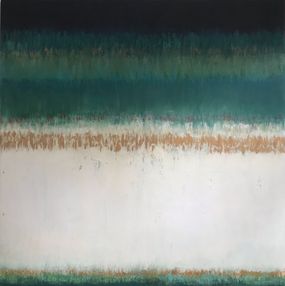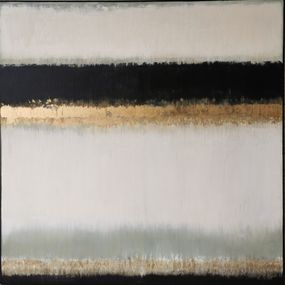
Hyperrealism
During the late 1950s and early 60s in New York City, Abstract Expressionism, Pop Art and Minimalism dominated the art scene. Hyperrealism was heavily shrouded by the impact of these movements, causing it to take ten years before the movement gained an official form of recognition.
The movement began in 1965, at the same time as Conceptual Art, and consisted entirely of male artists (Chuck Close, Don Eddy, Richard Estes, Ralph Goings, Robert Bechtle, Denis Peterson, and Malcolm Morley), apart from one female artist, Audrey Flack. Notably, the male artists' works were ripe with themes of machinery and industry, incorporating cars and mechanical objects in their works.
Flack on the other hand, conveyed more emotion in her works, exploring themes of death, femininity, mass-culture and consumerism in her pieces.
“Hyperrealism" derives from the French “Hyperréalisme," a term coined by Belgian gallerist, Isy Brachot, as the name for his exhibition in 1973. The exhibition included major American Hyperrealists such as Chuck Close, Ralph Goings and Robert Bechtle. Artists would often rely on tracing their works from photographs to create an intensely accurate replica.
Hyperrealists took realism one step further by mixing the real with the unreal. Although their images were based on reality, in creating their works from photographs they actually distanced their art from fact. Since Hyperrealists would strive to achieve such a realistic effect in their work, they would add elements to their pieces that were absent from the original photo. Building on the realist painting tradition, artists produced even more realistic works by adding details unseen in the original photo.
The reliance on photography allowed Hyperrealists to explore the realms of reality and artificiality, while examining alternative artistic methods. The representation of light was particularly distinctive in these works. Hyperrealists would use slide machines to project photos onto their canvases, allowing them to capture light in a completely new way and reproduce the glossy effect of a photograph in their paintings.
Chuck Close: One of the original Hyperrealists, Close is renowned for his huge-scale portraits. A catastrophic spinal artery collapse in 1988 left Close paralyzed, however he has still continued to paint. In 2005, his work John sold at Sotheby's to the Broad Art Foundation for $4.8 million.
Malcolm A. Morley: British-American artist and painter, Morley was one of the pioneers of Hyperrealism.
Richard Estes: The American painter would frequently divide his paintings in two, channelling two windows in his works. This would give the effect of looking at two paintings at the same time, and such an effect can be seen in his work Murano Glass, Venice (1976).
Ralph Goings: Predominantly painting scenes of everyday American life, Goings sought to portray the realities of the Great Depression in America. His depictions of working class Americans can be seen in his work Two Waitresses - Afternoon Break.
Audrey Flack: The sole woman of the original Hyperrealists, Flack mostly explored still lifes in her works. Her still life paintings questioned themes of Vanitas, using religious symbols on large-scale canvases.
Get back to reality with our selection of contemporary artists! Whether it's Juliana Wildner's flowers, Mark Figuras' figures or Kyliss' black and white portraits, Artsper has the Hyperrealist work for you.










